Every year, millions of Americans go bass fishing for largemouth bass, which is the most popular game fish species in the USA. However, despite the popularity of bass fishing, few people seem to consume them.
It raises the question of whether anglers eat bass frequently, and whether cooking them and eating them is possible.
Here’s the short answer:
Yes, you can eat largemouth bass, but it’s not generally considered one of the tastiest freshwater fish. In terms of taste, salmon, trout, walleye, and others are more popular. Moreover, bass from stagnant ponds or rivers can have a muddy flavor that many people dislike. In general, most anglers agree that bass is more fun to catch than they are to eat.
Can You Eat Largemouth Bass?
If you’re like us and like to catch bass, you’ve probably wondered whether they are good to eat. In addition, if you’ve ever seen bass anglers, you likely know that most of them release their fish after catching them, and almost none of them keep any for eating.
Why is this the case?
There’s a possibility that eating largemouth bass isn’t healthy, but that’s not true. These fish are perfectly safe for human consumption, and some people eat them regularly.
Another reason might be that they taste bad. While taste is very subjective and individual, there is more evidence supporting this argument. It is very difficult to disguise the muddy flavor of bass caught in stagnant waters, especially with the best of recipes.
It is important to eat bass from clean waters, ideally large, clear lakes or rivers that are not polluted. Don’t eat bass from a murky pond, or a drainage canal.
In general, the taste of largemouth bass is similar to the smell of the water they were caught in. Therefore, if they come from a lake in a swampy area with a ‘tangy’ smell, their taste will be similar. Ideally, the water they come from should be clear and odorless.
Also, keep in mind that many lakes tend to have cleaner water during the cold season since algal blooms occur in summer. If that’s the case for your lake, you should eat bass only in the early or late season, not during the summer.
Moreover, it’s always a good idea to find out how polluted the waters where you fish are – that goes for all fish species before you decide to eat them.
What Does Largemouth Bass Taste Like?
Do you want to know how bass tastes? The answer depends on where it comes from. When caught from a clean lake, largemouth bass has a mild, agreeable taste, similar to bluegill.
When properly prepared, their flesh is white and tender and turns flaky when fully cooked.
However, if you get bass from murky or unclean waters, they can taste horrible. As an example, when the algal bloom occurs in the summer, bass meat tends to have a muddy flavor, which is why largemouth bass are best eaten in the winter.
Additionally, some people don’t like eating bass because their body cavity emits an unpleasant and pungent smell when they are gutted. After thorough rinsing, the smell usually disappears, and cooking usually leaves no trace of it behind.
As we have eaten both good and bad bass, we don’t think there’s a single answer to this question. It depends a lot on where the bass comes from, as well as their size and the skill of the cook who prepares them.
What Size Bass Should You Eat?
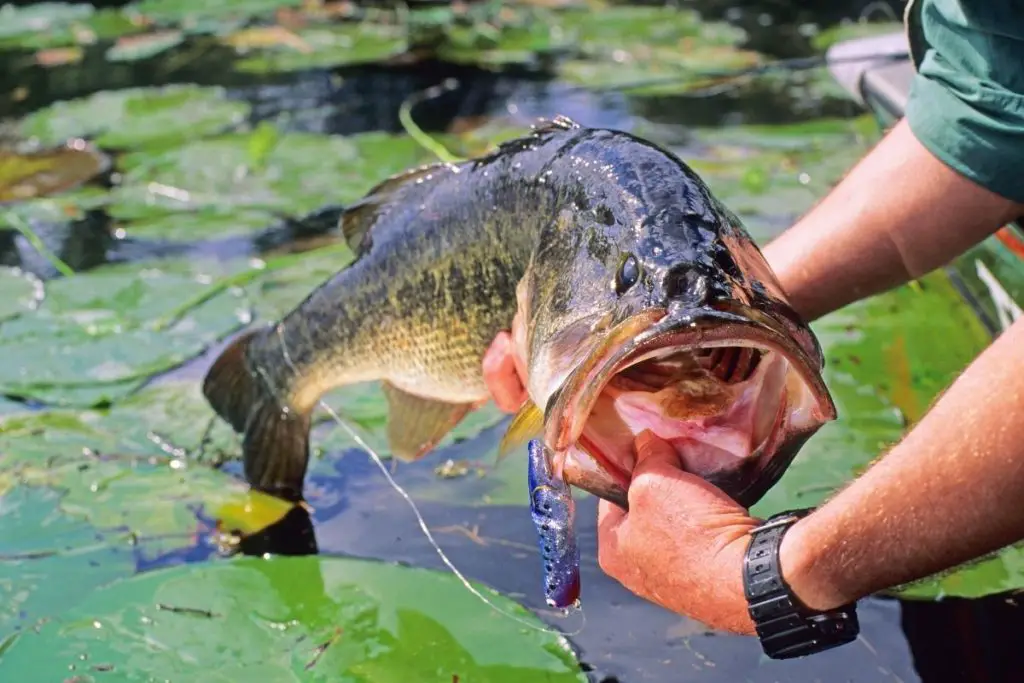
To eat largemouth bass, you should pick one that is between 10-14 inches long, and ideally no bigger than 15 inches long.
Much like many other fish species, young bass has softer meat and better flavor, while the older ones get tougher and accumulate more toxins.
Additionally, the smaller ones are easier to cook. If you have ever tried to cook a big fish, there is usually always a part that isn’t fully cooked, while the edges are already well done.
How to Cook Largemouth Bass
Filleting largemouth bass, followed by one of the following methods of cooking, is the best way to prepare them:
- Pan-frying
- Deep-frying
- Grilling
- Baking
Start by removing the skin and cutting off the filets. They are perfect for covering with milk, flour, and breadcrumb batter, followed by pan-frying. After battering and deep-frying the bass filet, you can cut it into smaller nugget-sized pieces.
Alternatively, you can bake largemouth bass in aluminum foil for a delicious meal. Let the meat stew in its own juice until it starts to flake, then season with salt, crushed garlic, and lemon juice.
Is it Better to Release Largemouth Bass, or to Eat Them?
It is almost a religion for many anglers to practice catch and release when it comes to bass fishing. For those anglers, it is almost sacrilege to cook and eat bass.
Catch and release makes a lot of sense from a conservation standpoint. Despite their popularity as game fish, largemouth bass gets more fishing pressure than any other fish species in the USA, and if most anglers kill the bass they catch, their populations would suffer.
Then again, if you don’t take any of the larger bass home with you, but just a few of the smaller ones, then that shouldn’t be a problem. In any case, putting back the big ones makes sense for a variety of reasons.
Firstly, they tend to be large female breeders who lay thousands of eggs per spawning season, and secondly, they also taste awfully bad.
Since numerous other fish species taste better than bass, including crappie, perch, trout, and walleye, it really isn’t necessary to take home bass. Even anglers who enjoy eating bass tend to agree that their flavor isn’t special. If that is the case, why not release them, and keep the more delicious ones for eating?
Final Remarks
In conclusion, largemouth bass is completely safe to eat and can make a flavorful dish when it comes from a clean environment and is prepared correctly. However, you should definitely steer clear of bass caught in stagnant or unclean water, since they tend to taste awful.
- Do You Need An Indicator For Nymph Fishing? - November 16, 2023
- Fishing Safety Tips For Families - September 25, 2023
- What Is The Best Time To Night Fish At A Lake? - September 18, 2023


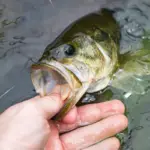
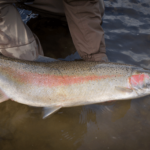
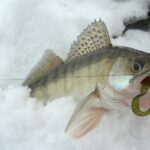

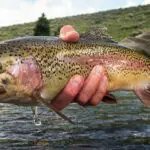
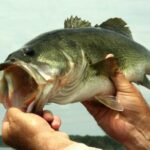
![Is Carp Good To Eat (Or Bad)? [Taste, Safe & Prepare] Is Carp Good To Eat](https://irvinelake.net/wp-content/uploads/2022/02/Is-Carp-Good-To-Eat-150x150.png)
